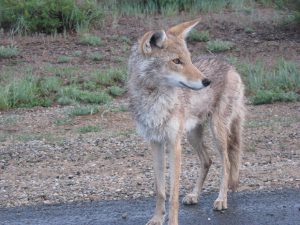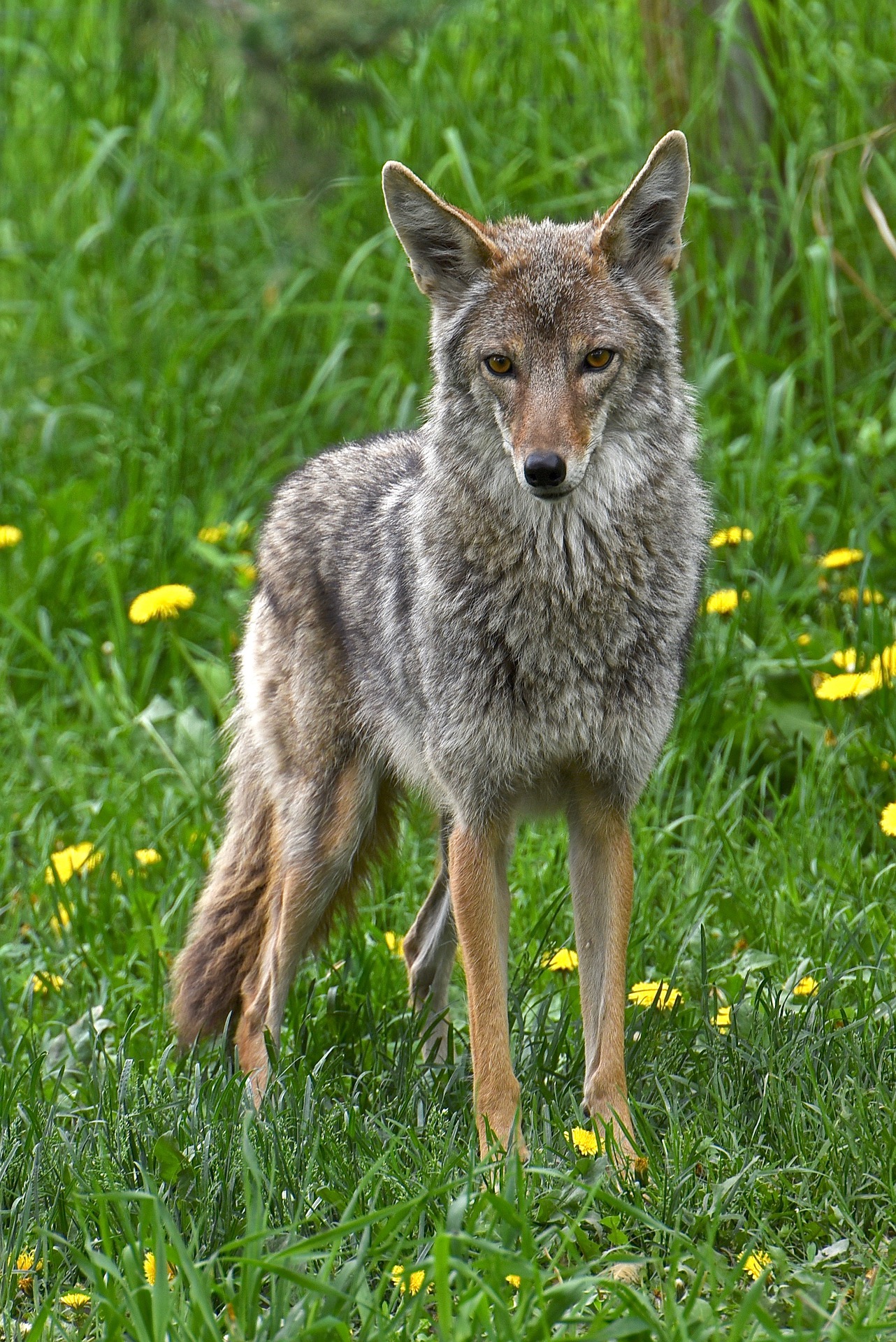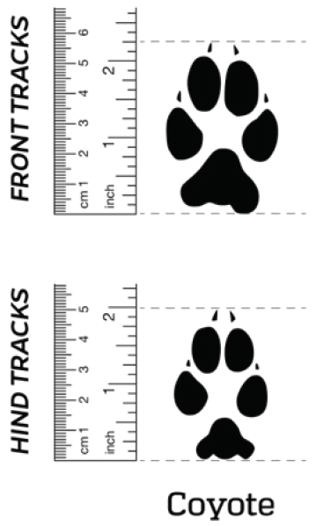Shrewd and sly, coyotes have earned a reputation as cunning creatures, but many of us know little about the wild canines that inhabit our neighborhoods. And much less about how to live with them.
Read on to learn more about coyote identification, how they came to Florida, and management techniques. Or, watch our Wild Sarasota webinar: Cunning Coyotes for a more in depth look at all about these canines.
Coyote (Canis latrans)

Though there’s an ongoing debate as to whether coyotes are native to Florida, they’re here to stay!
Physical Description
Coyotes are a medium-sized member of the dog family standing at about 2 feet tall and 3.5 to 4 feet long. Their color varies from light to dark but generally takes on a yellowish-brownish grey with lighter undersides and throats. They have bushy tails with black tips. Eastern adults can weigh anywhere from 18-50lbs compared to the 15-35lbs of coyotes out west. In Florida, most adults average between 25 and 30lbs.
Great Migration

What’s the cause for such a weight differential? Range expansion.
While there are fossil records of coyotes in Florida dating back to the Pleistocene epoch, there were none living in the area when Europeans colonized the peninsula. Before 1700, the coyotes’ range was confined to the Great Plains and the majority of Mexico due to the presence of their predator, the Red wolf. As red wolf populations declined, the range of coyotes expanded north to fill most of North America, south all the way to Panama, and east to the Atlantic. As the coyotes moved east, no longer troubled by the extirpated (extinct or non existent in that region) red wolf, they began breeding with grey wolves. This influx of wolf genes accounts for the substantial increase in size from west to east.
But this migration took time, and coyotes didn’t make it to Florida until the mid 20th century. By the 1970s, coyotes were established in northern Florida and by 2007 could be found in all 67 counties across the state — hence the native vs. naturalized debate. Today, there are between .2 and 1.2 coyotes per square mile in Florida for a total of somewhere between 13,000 and 70,000 individuals.
Have I had a visitor?
With so many coyotes in the area, you may be left wondering: have I had a visitor? While coyotes are not overly shy, they’re crepuscular (most active at dawn and dusk) and may avoid notice, so here are some other identification tips:

Scat
Coyote scat averages 4″ long and tends to contain hair of prey, but this varies day to day, between individuals, seasonally and depending on diet.
Tracks
Like all canines, coyotes have tracks with a two-lobed heel pad. Tracks are ~2.5 inches long by 2 inches wide. In comparison to domestic dogs, coyote tracks tend to be narrower and may only leave claw marks above the two most forward toes.
Coyote Management: Be Coyote Smart!
As with all wildlife, it’s important to minimize conflict and a lot of that comes from prevention tactics. Take the following suggestions to heart and don’t allow coyotes to become accustomed to seeing humans!
- Never feed coyotes, this includes inadvertent feeding:
- Secure garbage and compost
- Clean up pet food, fallen fruit, bird seed
- Keep cats indoors.
- Keep dogs (especially small dogs) on leashes and supervised.
- Monitor and secure backyard chickens.
- Close off crawl spaces under buildings.
Should you see a coyote, there’s no reason to be alarmed, you are in a position of dominance. Simply assert your dominance by hazing.
- Wave objects like sticks and umbrellas.
- Make noise with whistles, pots and pans, car and air horns or coyote shakers.
- Create disturbances with motion sprinklers, water pistols, thrown rocks, firecrackers, or motion lights.
- If with a small child, make lots of noise as you move towards coyote, and pick up your child.
- If walking a dog, pick up small pets and stand in front of a larger dog. Larger dogs will often be the aggressor!
- Never run! Simply because coyotes are playful and will think you are trying to play with them.
If a coyote loses its fear of humans due to associating us with easy sources of food, it may exhibit unusual behavior. This could include a approaching people, chasing joggers and bikers, or attacking leashed pets. Unusual coyote behavior can be reported to your nearest FWC Regional Office.
Read all our Wild Sarasota blogs HERE
Curious to learn more about coyotes? Watch our Wild Sarasota webinar: Cunning Coyotes!
 0
0
